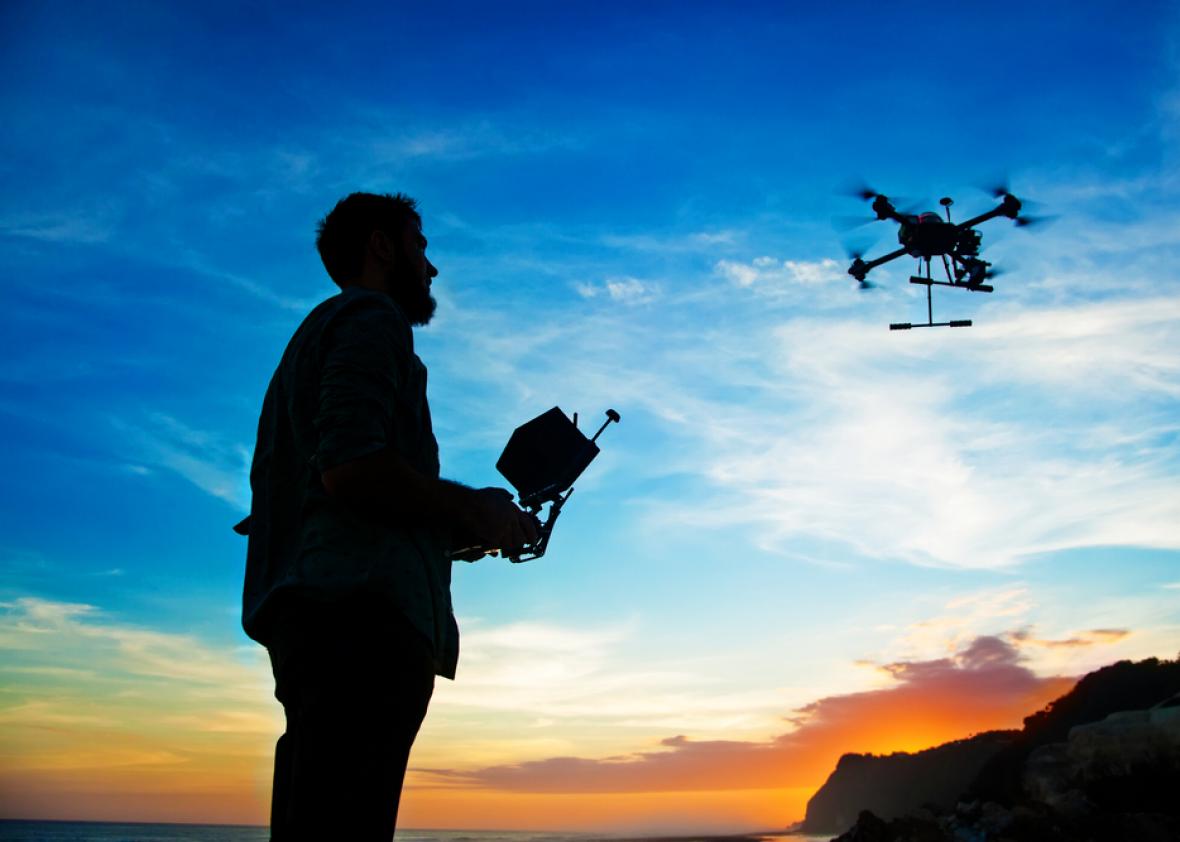And Now Drones Can Take Pictures at Night

Photo by Mila Supinskaya/Shutterstock
If a tree falls in the forest, and it’s really, really dark outside, can a drone see it? For most of human history, the answer to that philosophical question has been “no.” (“Drones don’t exist yet” has also been an acceptable answer.) Now, the makers of a new drone called the Zenmuse XT intend to prove that the answer is “Yes, in a manner of speaking.”
Ina Fried at Re/Code writes that, early in 2016, the dronemaker DJI plans to introduce a drone camera that uses thermal imaging to provide visibility in sub-optimal conditions. The Zenmuse XT, developed in conjunction with the imaging company FLIR Systems, basically uses an object’s heat signature the way that normal cameras use visible light: by illuminating the object and allowing the camera to see it. Because an object’s heat signature can be detected in darkness as well as light, thermal photography is ideal for night-vision applications. Basically, night vision is great for finding people who are hiding or otherwise concealed. Rescue workers searching for survivors in, say, an earthquake could use a thermal-imaging drone to find people at night as well as in the daytime. Are you a fleeing criminal seeking to evade the police by hiding in a nearby cornfield? Well, tough luck, pal: The cops’ thermal-imaging drone will quickly blow your cover. Want to always win at hide and seek? Have I got the drone for you!
But the Zenmuse XT can be used in a lot of other ways, too. The camera could conceivably help firefighters see through thick clouds of smoke and locate the source of a fire. Farmers could use it to identify diseased crops. “The applications are endless,” DJI’s Michael Perry claimed in a promotional video introducing the XT. And that idea is simultaneously exciting and terrifying.
Technologies of seeing—devices and innovations that extend, enhance, or augment human vision—are fascinating and fraught. It’s one thing to use a pair of binoculars to get a closer look at, say, a bird. But it’s another thing to use those binoculars to peep at your neighbor unbeknownst to him. Camera-equipped drones have become so polarizing largely because they seem to be a new infringement of the intrinsic human right not to be watched.
For every legitimate use one can imagine for a drone, one can also imagine the drone being used for creepy and invasive purposes. DJI has indicated that the Zenmuse XT will be geared for the commercial market, and the eventual price for the device will probably be unaffordable for most casual hobbyists. But it’s likely that, at some point soon, similar technology will come to the consumer-drone market, which means that your same jackass neighbor who uses his drone to take pictures during the day will soon be able to do so at night—and, because it’s dark out, you won’t be able to tell whether he is taking pictures of you. So please enjoy these waning days of being able to conceal yourself under cover of darkness. Soon, there will literally be nowhere and no way to hide from Peeper Nation.
This article is part of a Future Tense series on the future of drones and is part of a larger project, supported by a grant from Omidyar Network and Humanity United, that includes a drone primer from New America.
Future Tense is a partnership of Slate, New America, and Arizona State University.

